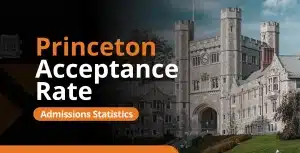How to Get Published in the Journal of Student Research
You don’t have to hold a PhD to make groundbreaking discoveries. Take, for instance, a student at Oklahoma State University who recently unearthed a new dinosaur species. That’s where the Journal of Student Research steps in—it’s where aspiring scientists like you can share your findings. It offers a peer-reviewed journal that highlights the accomplishments of student researchers.
If you want to get published in the journal, we’ve got you covered. We’ll walk you through the entire submission process: from the guidelines to tips to ensure your work stands out.
What Is the Journal of Student Research?
The Journal of Student Research is an open-access, peer-reviewed journal based out of Houston, Texas. The whole idea behind JSR is to promote academic excellence and innovation, so they’re open to submissions from students at any level of education and covering pretty much any topic you can think of.

The journal gets thousands of submissions every year from students all around the globe. Since they started 12 years ago, they’ve published over 2300 research papers from about 4700 students. Plus, JSR is known for its rigorous peer-review process. Every article that goes in there gets checked out by experts in the field to maintain the journal’s high standards.
Meaning, the journal gives you a chance to share your findings with a wider audience, which can really boost your academic credentials. Not only that, but it also lets you dip your toes into the whole peer-review process. It’s like a sneak peek into what academic life is all about.
Journal of Student Research Submission Guidelines
If you’re a high school student eager to get your research published in the Journal of Student Research, we’ve laid out some straightforward submission guidelines to help you through the process. If you’re a college student, check out this separate set of guidelines.
Eligibility
- You must be a high school student at an accredited academic institution.
- You must be the main author of your manuscript.
- You need a teacher or advisor to help you submit. Your manuscript needs to include your high school and teacher/advisor contact information.
- JSR is against journal hopping. Your research must not have been published elsewhere before and must not be submitted to another journal at the same time.
Research topics
JSR welcomes manuscripts covering a wide range of topics, from humanities to sciences. Just make sure that the research is novel, integrative, and written in a way that is accessible to a wide audience. They’re also open to various types of articles, including:
- AP Research Articles
- IB Articles
- Honors Research Articles
- Research Articles
- Review Articles
- Research Projects
- Research Posters
Formatting
When preparing your manuscript, here’s what you need to do with the formatting:
- Save it as a Microsoft Word document (Docx).
- Keep the text single-spaced on standard Letter-sized pages (8.5″ x 11″).
- Stick to Times New Roman, 10-point font, all in black.
- Make sure there’s a 1-inch margin all around.
- Keep your article title under 100 characters, including spaces.
- For the abstract, keep it short and sweet, no more than 250 words.
For more detailed formatting instructions, check out the template provided by JSR.
Submission fees
JSR keeps all published articles free to read or download using an open access model. To cover quality assurance, editing, and archiving, they charge the following article processing fees (APCs):
- Pre-review APC: $50 due when you submit.
- Post-review APC: $250 due after you get the editorial decision.
You can list up to five authors (including advisors) per submission. If you need to add more, it costs $25 per extra person, payable upon acceptance for publication.
Important note: All fees are non-refundable.
Timeline
The journal has set deadlines for submissions in February, May, August, and November. For the latest call, the deadline is May 31, 2024. Its tentative publication date is in August 2024.
How to Submit to the Journal of Student Research
Ready to submit to the Journal of Student Research? Here’s a step-by-step guide to help you through the process.

1. Registration
Go to the JSR registration portal and create an account by filling out the required details.
2. Login
After registering, log in to the submission portal. You’ll see the Active Submissions queue on the dashboard, which lists submissions currently in the editorial process. You can also access past submissions under the “Archives” tab.
3. Submission
Click the “New Submission” link to submit a new article. Be sure to follow the manuscript guidelines detailed in the previous section and carefully follow the site instructions.
4. Review
After you submit your article to the journal, the waiting game begins. The editors will contact you with a decision once the review process is completed, which takes about 12-24 weeks. The journal uses a double-blind review process, so the identities of both authors and reviewers are kept confidential.
You’ll receive scholarly feedback from the reviewers. This feedback will help you improve your submission and understand the process better for future publications.
5. Decision
If your article is accepted, it will move to the editing stage. If revisions are needed, you’ll need to indicate your willingness to make the changes using the Editor/Author Correspondence. After completing the revisions, upload the revised version for a second review. The Section Editor will either resubmit it to the same reviewers or to new ones and notify you of the decision similarly to the initial review.
Even if you make the required edits quickly, expect the journal to take around 7-9 months to publish. Successfully navigating these stages will lead to your publication in the journal.
Tips for Getting Published in the Journal of Student Research
Getting published in the Journal of Student Research takes careful prep and following specific guidelines. Here are some tips to boost your manuscript’s chances of acceptance and make it stand out to reviewers.
1. Make sure your claims are unique.
Start with a thorough literature review to see what’s already been researched in your area. For example, if you’re studying the effects of a teaching method on student performance, check out existing studies on this topic. Identify gaps or unexplored angles.
Use databases like Google Scholar, PubMed, or JSTOR to find relevant papers. Compare your findings with a key paper in your field. If previous studies found a 10% improvement with a teaching method and your modified approach shows 25%, your work stands out as novel.
Acknowledge any papers that might weaken your originality claims. If similar studies exist, mention them and explain how your research is different. For instance, if a prior study looked at short-term effects and yours focuses on long-term impacts, highlight this. This not only shows you’re aware of existing research but also emphasizes your study’s unique contribution.
2. Back up your claims with strong evidence.
Use appropriate statistical analyses to validate your findings. If you claim a new drug reduces disease symptoms, provide detailed statistical data like p-values and confidence intervals. Include graphs, charts, and tables to visually represent your data. These tools help reviewers and readers quickly understand the strength of your evidence.

Address any additional evidence that could strengthen your paper and tackle potential weaknesses. If your study has a small sample size, discuss how more data from a larger population might reinforce your findings. Suggest further research if needed.
Also, consider conducting supplementary experiments or analyses. If you claim a correlation between two variables, a regression analysis could offer stronger evidence. By identifying and addressing potential gaps, you make your claims more robust.
3. Cite appropriately.
Citing previous literature correctly is essential to support your research and acknowledge prior work. Start by conducting a comprehensive review of relevant studies using databases like PubMed, Google Scholar, and Web of Science. Cite both seminal works and the latest research in your field. For example, if your study builds on a specific theory, cite the original paper that introduced the theory and recent studies that have expanded on it.
Cite literature that supports your methodology and findings. If you use a specific statistical test, reference studies that have used the same test in similar contexts. This strengthens your methodology and provides a foundation for your results.
Ensure all citations are accurate and formatted according to the journal’s guidelines. Using citation management tools like EndNote, Mendeley, or Zotero can help organize your references and avoid errors. Appropriately citing previous literature demonstrates the rigor and credibility of your research, making a strong case for its significance and originality.
4. Provide detailed methodology to ensure others can replicate your study.
In your paper for JSR, describe every step of your experiment or analysis thoroughly. If you conducted a survey, include details about the survey design, participant demographics, and exact questions asked. Specify the statistical methods used, like t-tests or ANOVA, and explain why you chose them. This detail allows other researchers to replicate your study and verify your results.
Consider including supplementary materials to aid reproducibility. These might include raw data sets, detailed protocols, and code used for statistical analyses. If your study involves complex data analysis with software like R or Python, provide the scripts used. This transparency helps others follow your process exactly and identify any discrepancies.
5. Write clearly.
Making your manuscript understandable to non-specialists is crucial for broadening your research’s impact. Use simple language and avoid jargon as much as possible. When technical terms are necessary, provide clear definitions. Use analogies and examples to relate complex concepts to everyday experiences.
Structure your manuscript logically and clearly. Use headings and subheadings to break down content into manageable sections. Each paragraph should focus on one idea and flow smoothly to the next. Visual aids like charts, graphs, and diagrams can also help clarify complex information.
Make sure all figures and tables are well-labeled and have descriptive captions. A well-designed flowchart, for example, can effectively illustrate a complicated procedure, making it easier for non-specialists to understand. Improving readability and clarity makes your work accessible to a broader audience.
6. Show potential for revision and resubmission.
Even if your paper isn’t initially accepted, showing potential for revision and resubmission is key. Start by carefully reading the reviewers’ feedback. Identify the main areas needing improvement and make a plan to address each point. For example, if reviewers point out a lack of data, consider doing more experiments or collecting additional samples to strengthen your results. If your methodology is unclear, provide more detailed descriptions and include supplementary materials like detailed protocols or raw data.

Seek feedback from peers or mentors who can offer a fresh perspective. They might spot issues or suggest improvements you missed. Revise your manuscript thoroughly, focusing on clarity, coherence, and logical flow. If a reviewer says the discussion section is weak, rewrite it to better interpret your results in the context of existing literature.
In your resubmission cover letter, clearly explain how your revised manuscript addresses the reviewers’ concerns. Showing your willingness and ability to improve significantly boosts your chances of acceptance upon resubmission.
Journal of Student Research Sample Papers
Here’s another neat trick to up your odds of getting your work into the Journal of Student Research: read their past articles. Let’s peek at a couple and pick up some pointers from their papers.
1. “Effects of Parasocial Relationships and Identification with TV Characters on Teens” by Lara Grosskopf
Summary
Lara Grosskopf dives into how teenagers, aged 14-18, interact with TV characters. She finds that while teens often form strong connections with these characters, it’s not always a clear-cut positive or negative. Grosskopf suggests that binge-watching shows meant for older audiences can sometimes lead to negative outcomes, emphasizing the need for better parental oversight.
What makes the research good
Grosskopf’s paper tackles a relevant issue: how today’s teens engage with TV characters in the era of binge-watching and social media. What makes it stand out is its exploration of the combined effects of parasocial relationships and identification, something previous studies overlooked. This fresh perspective fills a gap in existing research, evident in the paper’s thorough review of the literature and its identification of the research gap. Focusing on teens aged 14-18 is crucial, given the pivotal role this age group plays in shaping their identities through media consumption.
The study’s methodology adds to its credibility. Grosskopf used surveys to gather quantitative data, allowing for a detailed analysis of participants’ experiences. This approach provides clarity in understanding the correlations identified, such as the strong link between parasocial relationships and identification. The presentation of findings is straightforward, making it easy for readers to grasp the study’s significance.
Furthermore, Grosskopf’s research offers practical insights. By showing how watching shows meant for older audiences can have negative effects on teens, she highlights the importance of parental controls. Concrete data from the survey backs up these findings, making a compelling case for stricter viewing guidelines. This practical aspect ensures that the research can inform both policy and parental strategies, making it a valuable contribution to the field.
2. “Why and How Should High School Students Learn Basic Life Support?” by Kriya Shah
Summary
Kriya Shah’s study dives into how aware high schoolers are about Basic Life Support (BLS) and cardiopulmonary resuscitation (CPR), and if they’re keen to learn. They surveyed 120 city high school students and found out most of them don’t know much about BLS, but they’re totally up for learning it. This student research suggests that teaching BLS in high schools could really help cut down on heart-related deaths.

What makes the research good
Shah’s paper nails it by tackling a big public health issue in India—deaths from heart problems—and suggesting a practical solution: education. It’s well put together, kicking off with a clear intro that lays out the problem of heart disease deaths and how teaching BLS could help. This grabs your attention right away. The main goal of figuring out what high schoolers know about BLS and if they want to learn it keeps the research focused and purposeful.
The way Shah conducted the study is another plus. They used a solid questionnaire handed out to 120 students, making sure they got a good mix of opinions. The questions were smartly made to check how much students knew and if they were keen on learning more. And because it was all numbers-based, the results are crystal clear. Like, only 38% knew about BLS before, but a whopping 79% wanted to get trained. This big gap shows there’s room for teaching, as Shah points out in the wrap-up.
The part where Shah discusses what they found and what it means is where the paper really shines. They push for adding BLS training to high school lessons, backed up by how many students are game to learn and use it. Shah brings in some specific stats from the survey, like most students knowing what BLS and CPR stand for, to back up the idea that people are somewhat aware but need more info. And finding out that most students prefer healthcare workers as trainers gives a good hint on how to set up the teaching. Shah’s paper lays out clear steps to cut down on heart-related deaths, making a strong case for why it matters and why we should pay attention.
If you want to see more of JSR’s articles, head over to their archive.
Conclusion
The Journal of Student Research helps you learn the ins and outs of research and develop your critical thinking and analytical skills. Plus, since JSR is open access, it makes knowledge accessible to everyone. Getting published in JSR not only boosts your academic profile but also fuels your passion for research and learning. If you want to make your mark in the academic world, JSR is the perfect place to start.
FAQs
What research topics does the Journal of Student Research accept?
The journal accepts a wide range of topics across different fields like science, tech, engineering, math, social sciences, and humanities. They’re all about encouraging diverse and interdisciplinary research and collaboration.
What is the acceptance rate of the Journal of Student Research?
The acceptance rate of the Journal of Student Research is around 65%. It’s competitive but still a pretty good shot for students looking to get their research out there.
How much is the submission fee for the Journal of Student Research?
There’s a pre-review fee of $50 and a post-review fee of $250. Plus, if you’ve got more than five authors, there are some extra charges. Take note that fees are non-refundable as well.
When is the deadline for submission to the Journal of Student Research?
They’ve got deadlines in February, May, August, and November. The next one’s coming up on May 31, 2024. If all goes well, you might see your work in print by August 2024.





































